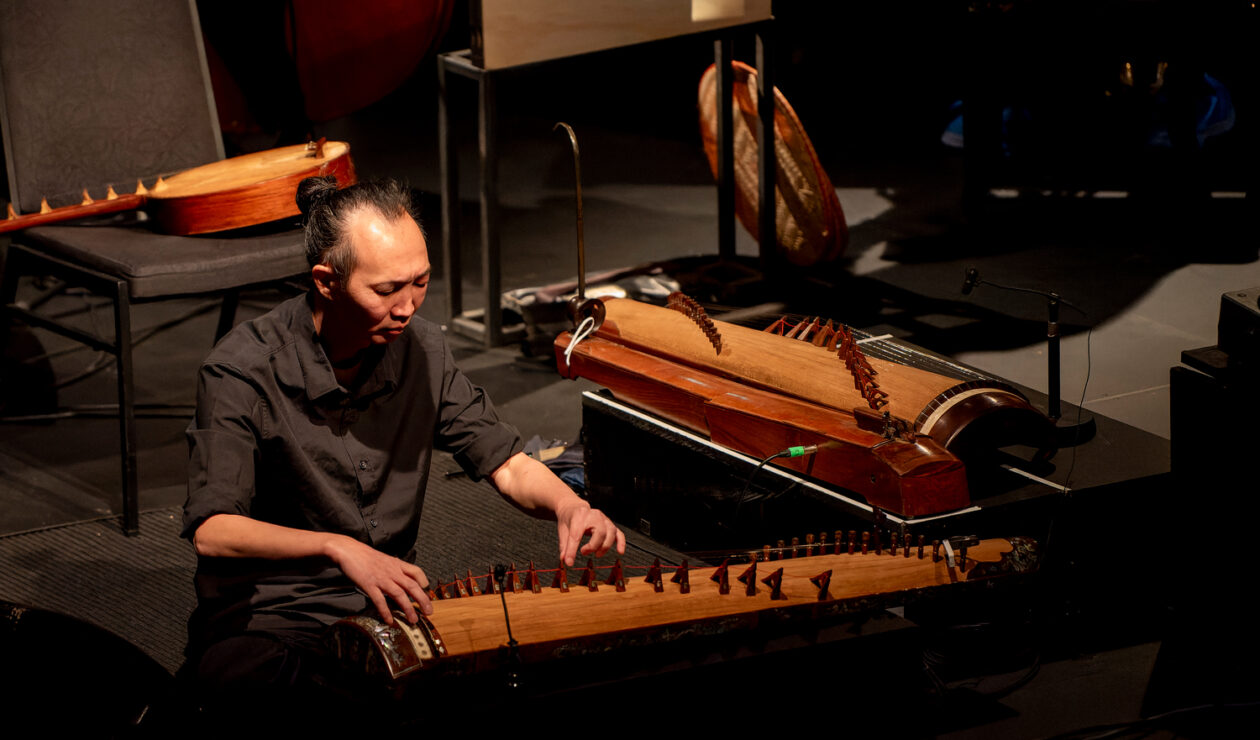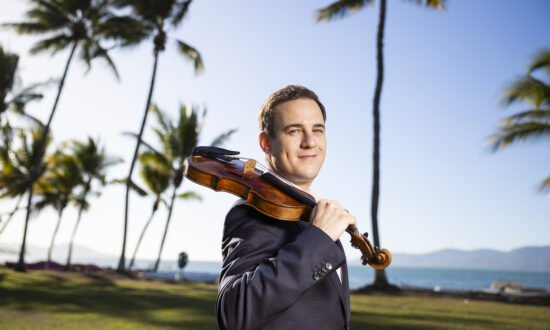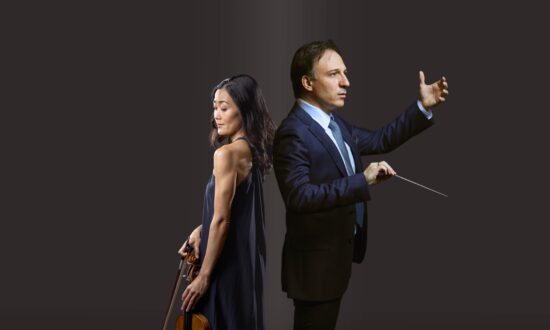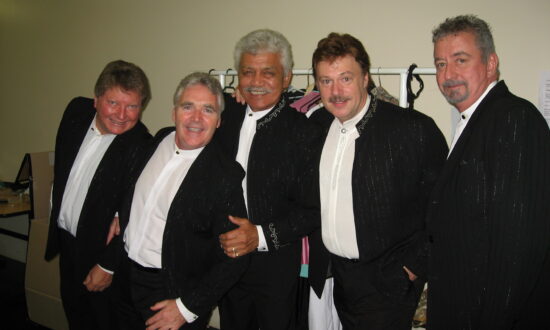An intricately constructed “life journey” told through music and slide projections, 1988 is one of the more beautiful shows to ever appear at an OzAsia Festival. Essentially, it is a story that could be retold a thousand times, about the hardship, barriers and ultimate rewards in trying to forge a new life in another country. But the way it is fashioned, with such great skill by the Vietnamese-Australian musician Dung Nguyen and his colleagues, makes it unique.
Across the stage floor lies a profusion of instruments, including various zithers on which he performs. In addition, there are water bowls, a double bass, an upright piano, plus an amazing vertical bamboo xylophone called the đàn t’rưng. Standing higher than any of the musicians who come on one by one, it looks remotely like a dinosaur skeleton.
One is first entranced by Dung’s solo playing on the đàn tranh zither, whose notes he bends and glides through as exquisitely as a singer would. His piece, a gentle pentatonic lullaby, gradually then ushers in a wonderfully free-flowing combined improvisation from the whole sextet, whose members must be named for their deep expertise: Peter Knight on trumpet and electronics, pianist Erik Griswold, double bassist Helen Svoboda, percussionist Vanessa Tomlinson, and Minh Ha Patmore on the đàn t’rưng.

Images from Dung Nguyen’s life are projected onto small screens during the performance. Photo: Xplorer Media
The variegated sounds and brilliantly honed interaction of this group tell of their many years of experience, going back to when Dung and Knight met in 2001. Svoboda, in particular, is terrific in her slap bass solo, and she adds vocalisations to bring out many of the melodies. Meanwhile, Tomlinson tickles the ear with intriguing percussive experimentations in which she gently mixes the water through her fingers and strikes the bowl with a soft mallet like a gong.

Musical performance 1988. Photo: Xplorer Media
Each of them is so thoroughly original. Griswold leads the ensemble in a boogie-woogie piece that leaps right out of nowhere and brings smiles. It forms an intentional part of the story, at the point when the teenage Dung arrives in Australia and has to handle all the shocks of Western culture. With his life forced into change, he is nevertheless able to fuse the sounds of a new culture with traditional music from his homeland. The young man is on an artistic trajectory.
Slides form an integral part of the storytelling. Images depicting each phase of Dung’s life – from his childhood in Vietnam and his earliest experiences learning music under his family’s tutelage, to his adult life in Melbourne – are projected onto small screens that are positioned among the musicians. Designed by Phuong Ngo, this visual dimension provides much interest and helps to frame the wordless narrative; and the projectors’ clattering noises make a fun percussive contribution, too.
Midway, images are shone directly onto another of Dung’s instruments, the guitar-like đàn nguyệt. Either side of him, two other musicians hold up bamboo-woven discs onto which are projected further images. It’s another clever touch.
The loveliest moment comes at the very end, when the lullaby we heard right at the start returns. The musicians hum it this time in unison, and by now it feels a part of all of our memories.

Get InReview in your inbox – free each Saturday. Local arts and culture – covered.
Thanks for signing up to the InReview newsletter.
With its quiet message of multicultural harmony, this faultless and polished show left an indelible mark.
1988 was presented at the Space Theatre for one night only as part of the 2023 OzAsia Festival, which continues until November 5. Read more OzAsia stories and reviews here.
Support local arts journalism
Your support will help us continue the important work of InReview in publishing free professional journalism that celebrates, interrogates and amplifies arts and culture in South Australia.
Donate Here




